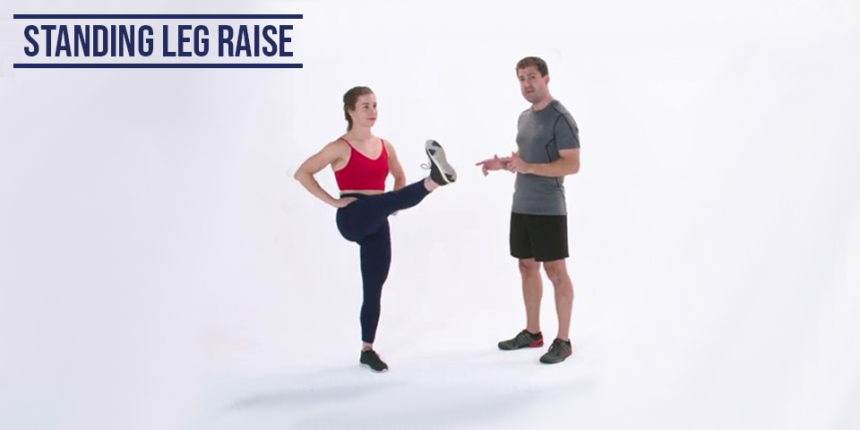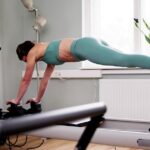The standing leg elevate tends to get overshadowed by showier workout routines like hip thrusts and burpees — however if you wish to construct up a powerful decrease half, it’s time to familiarize your self with this easy however efficient transfer.
It’s simple to do standing leg raises virtually wherever — so even for those who can’t make it to the gymnasium, you’ll be able to nonetheless knock out just a few units proper in your lounge.
Standing Leg Increase Train: Step-by-Step Directions
- Stand tall together with your arms in your hips and toes shoulder-width aside.
- Shifting your weight to your proper foot, slowly carry your left leg straight out in entrance of you, as excessive as you comfortably can. Preserve your core tight and your left foot flexed; don’t bend your knees, and keep away from rotating your ankle outward.
- Decrease your foot again right down to beginning place. That’s one rep. Full all reps on one facet earlier than switching to the opposite.
What Muscle tissue Do Standing Leg Raises Work?
The standing leg elevate train targets and strengthens your hip muscle mass. Particularly, the adductors alongside your inside thighs and the gluteus medius on the higher, outer fringe of your pelvis.
Since you use your hip muscle mass for strolling, working, and balancing, this train is very useful for maintaining you steady throughout cardio and power strikes like sprints, squats, and lunges.
Standing leg raises additionally work the rectus abdominis muscle (a.ok.a. your “six-pack”). The cross-body motion within the facet variation lights up the obliques (the muscle mass on the edges of your waist).
Standing Leg Facet Increase Variation
One variation of the standing leg elevate incorporates hip abduction, or transferring the leg away from the physique. Right here’s how one can do it.
- Stand tall together with your arms in your hips. Cross one ankle over the opposite so your high foot hovers over or frivolously touches the ground.
- Together with your foot flexed, carry your high leg out to the facet as excessive as you’ll be able to with out bending your knee. It’s best to really feel a slight squeeze in your working hip. Watch out to not rotate your foot outward as you carry — your foot ought to keep parallel to the ground with toes dealing with ahead all through the transfer.
- Decrease your foot again right down to beginning place. That’s one rep. Full all reps on one facet earlier than switching to the opposite.
Prepared so as to add the standing leg elevate to your subsequent leg exercise? Hannah Viva, NASM-certified private coach with Match Physique Boot Camp recommends sticking to an everyday tempo so you’ll be able to full each rep with management and consistency.
And if you wish to make standing leg raises tougher, add a resistance loop or ankle weight round your ankles.










